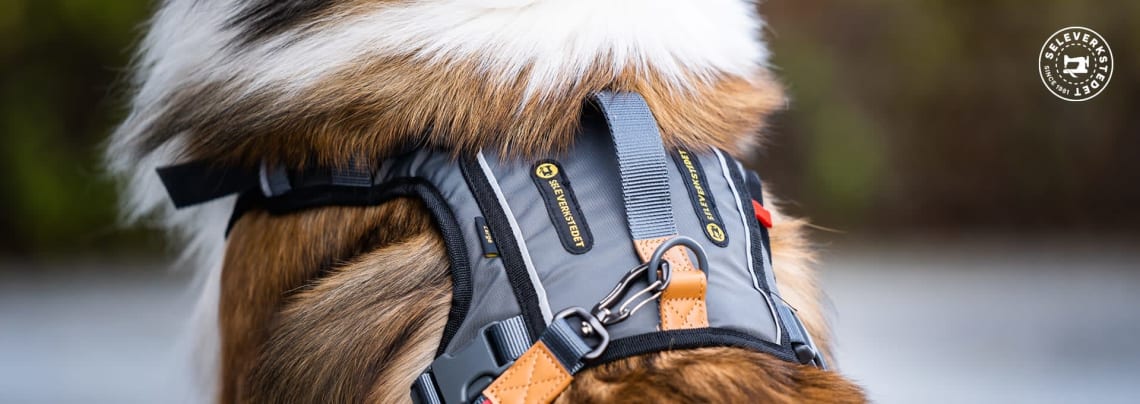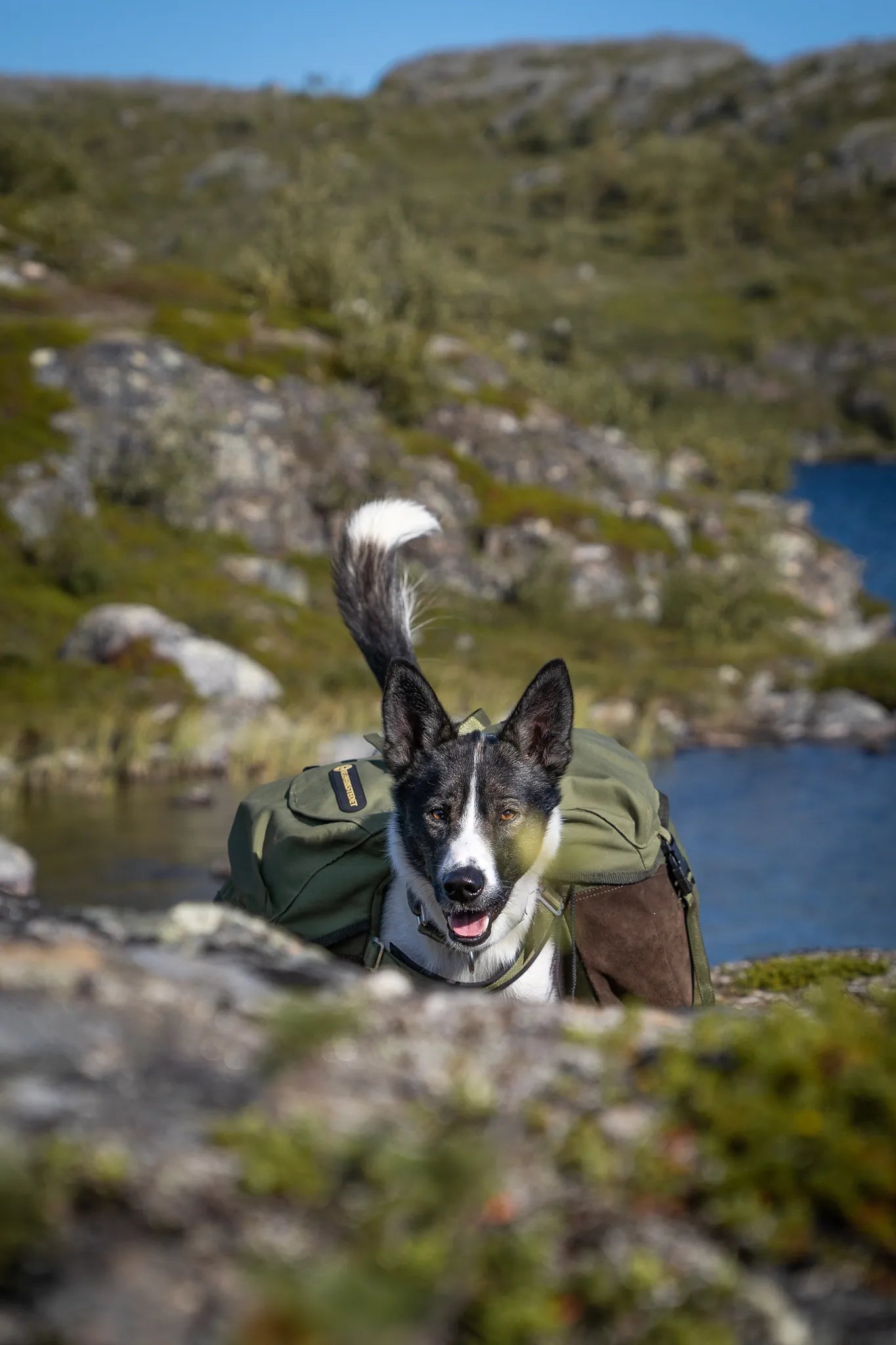Cross-country skiing season with a dog
Taking your dog skiing is great exercise! But if you're unsure how to get started, we'll give you some advice along the way.
Equipment the dog needs
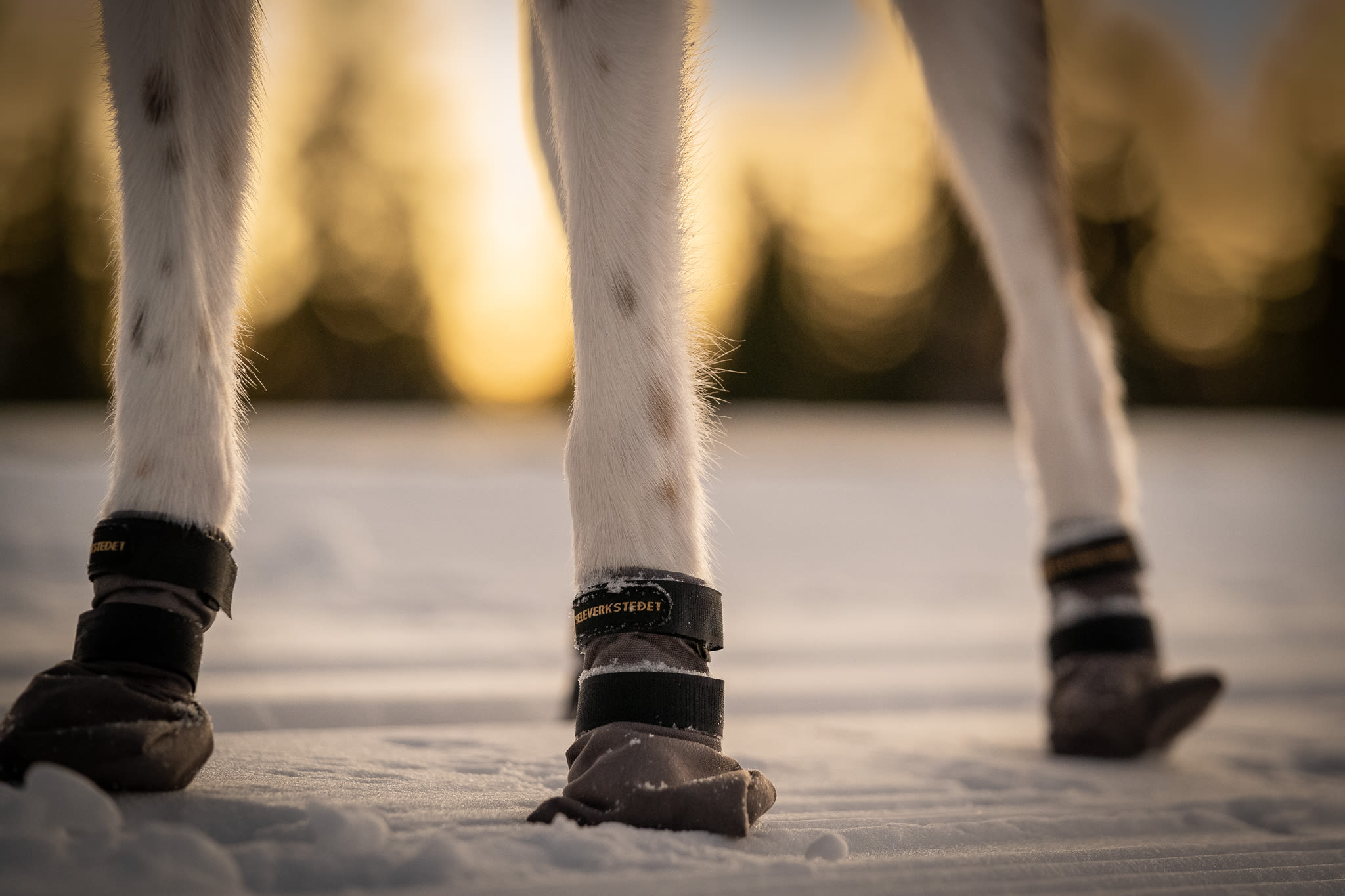
- Harness
- Socks for very cold or icy conditions
Equipment you need
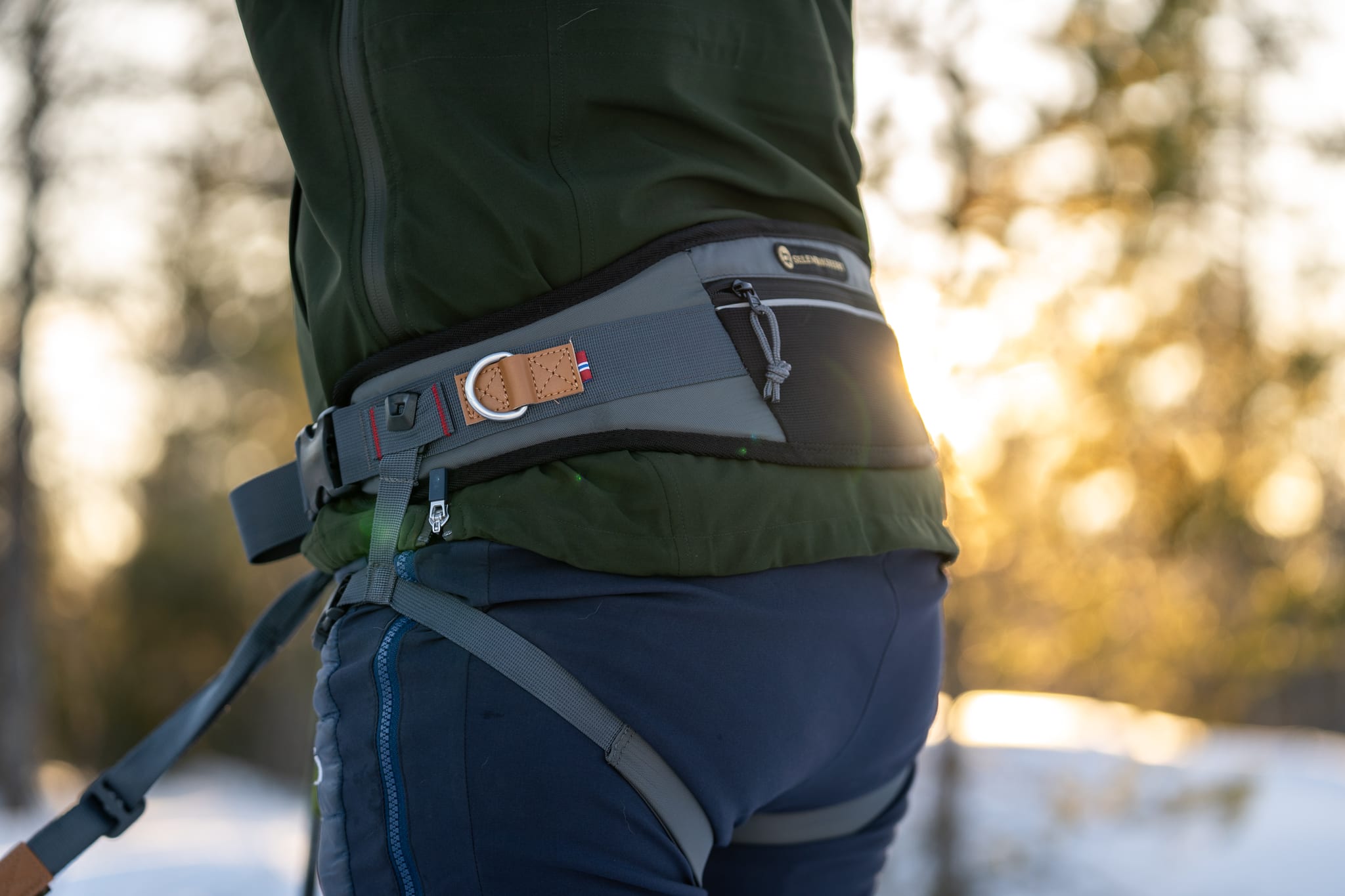
- Abdominal belt
- Running string (about 2-2.5 meters)
- Skis and poles
Dog harness
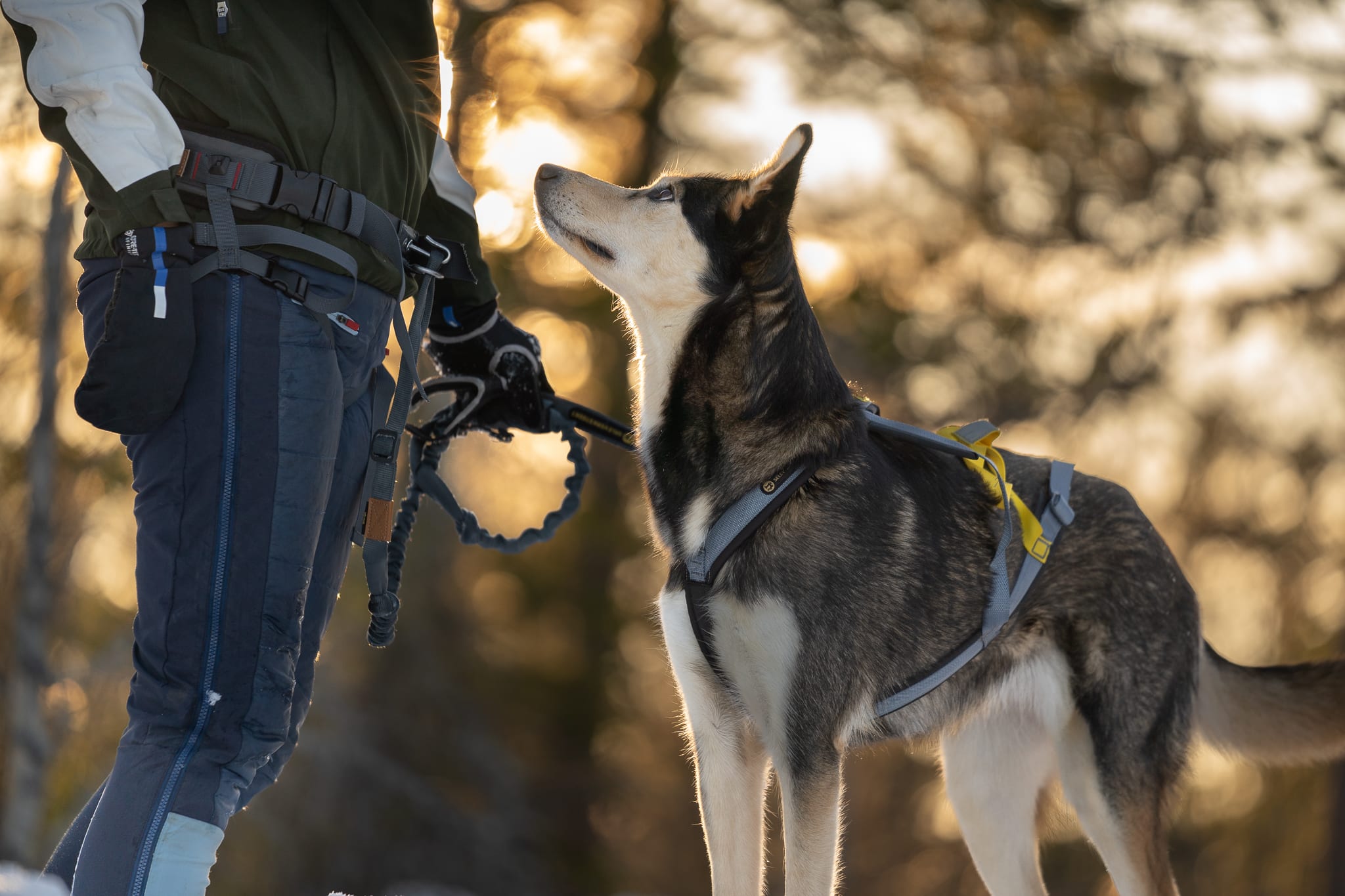
The harness should be a nome harness or adjustable harness that is intended for pulling. The elastic line should be long enough that the dog has good clearance from your ski tips when it is in front of you, but it should still be as short as possible. As short as possible because a long elastic will be dangerous on the ski slope, especially with a disobedient dog. Be considerate and let your dog in when passing by if he wants to say hello.
Which skis should I choose?
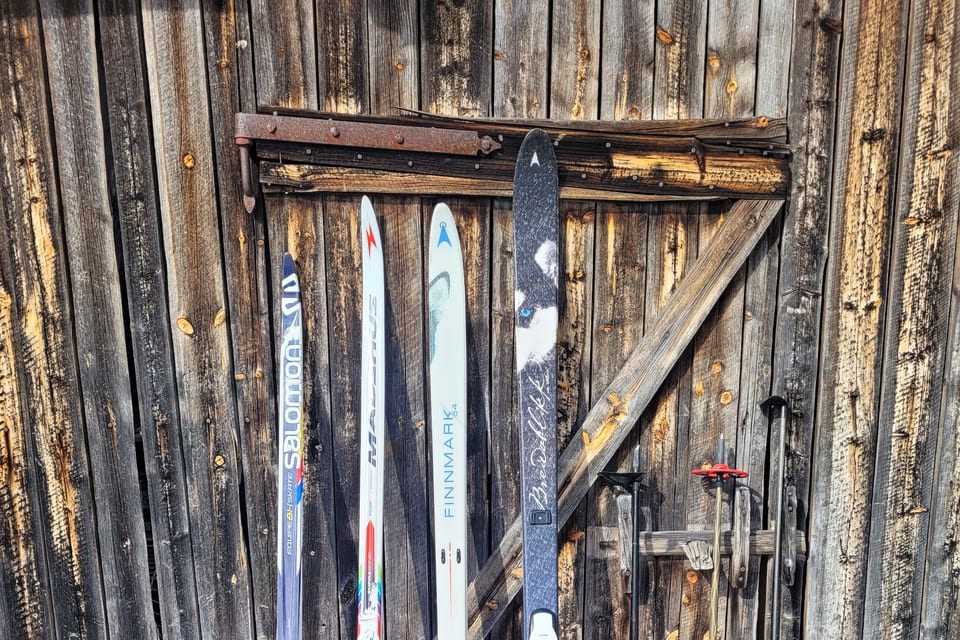
In competitive dog sledding classes, skate skis are almost exclusively used. But these are athletes who have fast dogs such as hounds, vorsteh or mixtures of these that gallop at high speed. On the other hand, if you have a short-legged dog that does not run that fast or a dog that trots slowly, classic skis will work perfectly! It is often an advantage to have skis that are too short rather than too long when you are taking your dog on a ski trip. It makes it easier to reach the dog without tripping on skis that are too long!
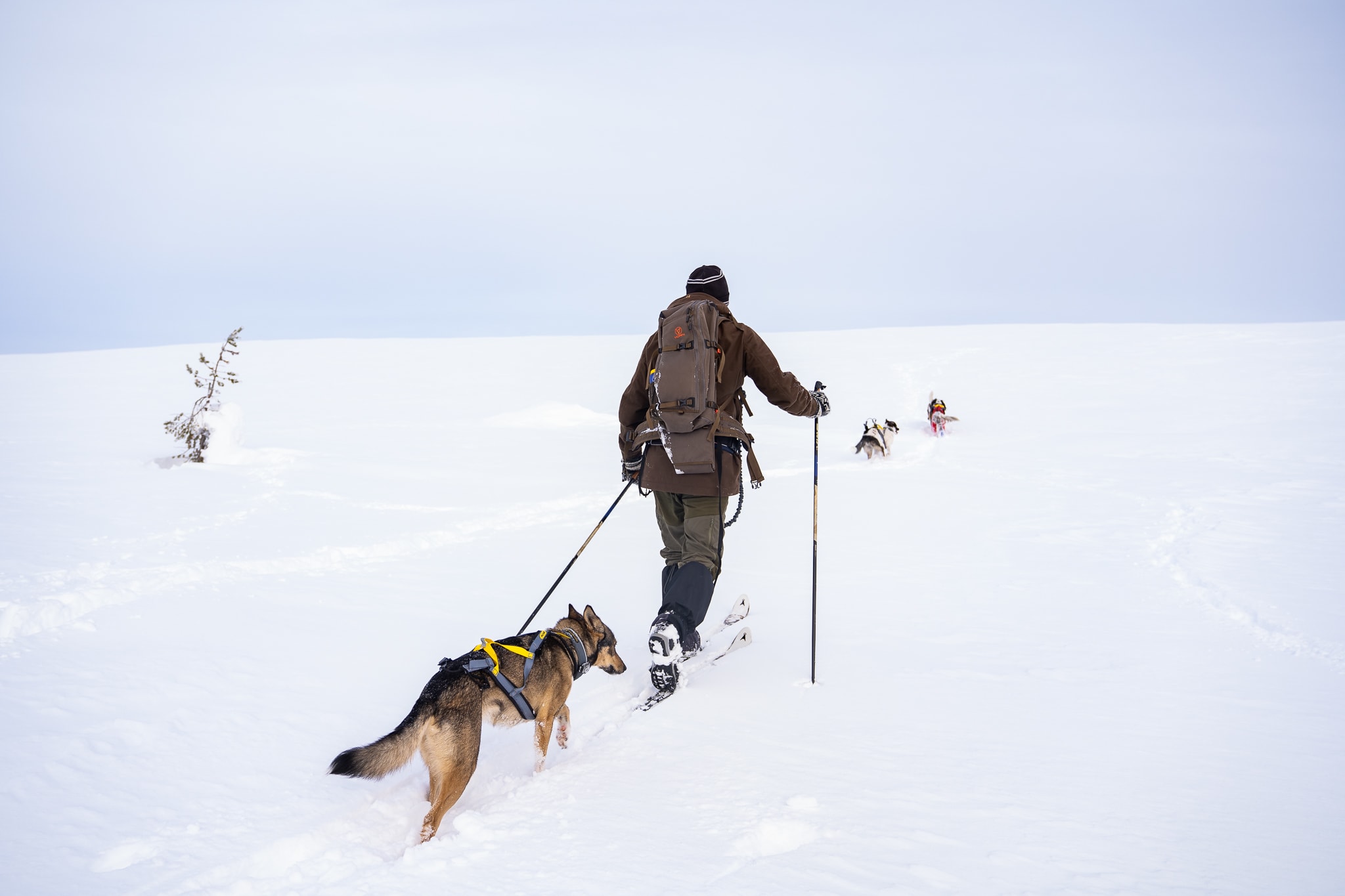
If you go a lot off-piste, mountain skiing is also a good alternative. Then it's exclusively mountain skiing without steel edges are the only option . Steel edges cause ugly and serious injuries to dogs every year and can cut right through both muscles and tendons if you are unlucky. So regardless of the type of ski, you should never use steel edges on your skis when you are with a dog. Outside the slopes, dogs build good strength in the loose snow, while on groomed ski trails they get good conditioning training!
Get your dog used to the equipment
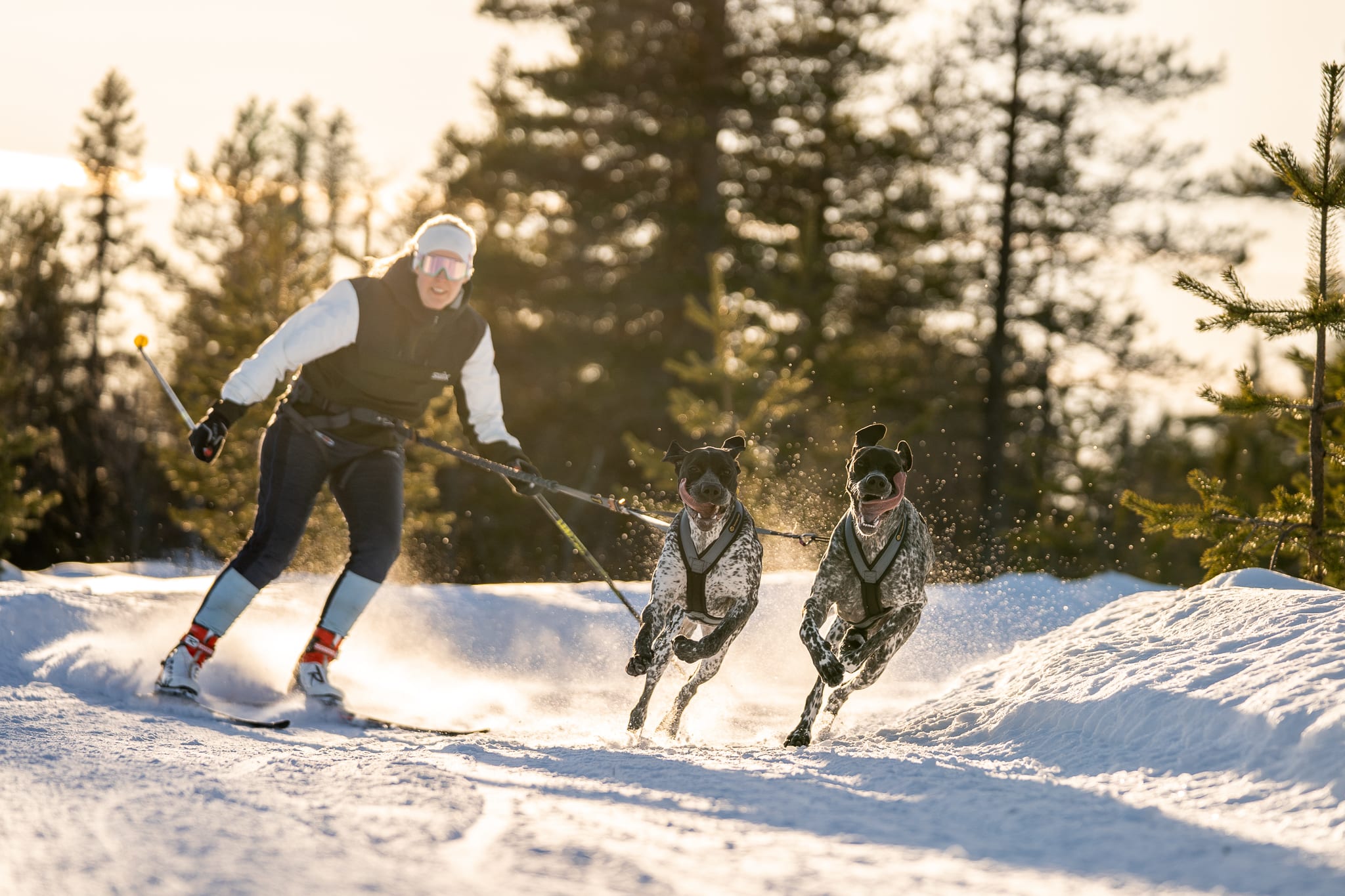
Has your dog ever seen skis? Is he used to walking when you jog, run or go fast? Is he used to wearing a harness? It may be a good idea to get your dog used to this before you put on skis. But if your dog is already used to cycling and going fast, just put on the skis! If your dog wants to chase the skis, you should spend more time getting him used to speed by running and, for example, having your dog on a leash next to you on the first ski trips so he doesn't have the opportunity to run after your ski tips.
Customize the tour to your dog's shape and size
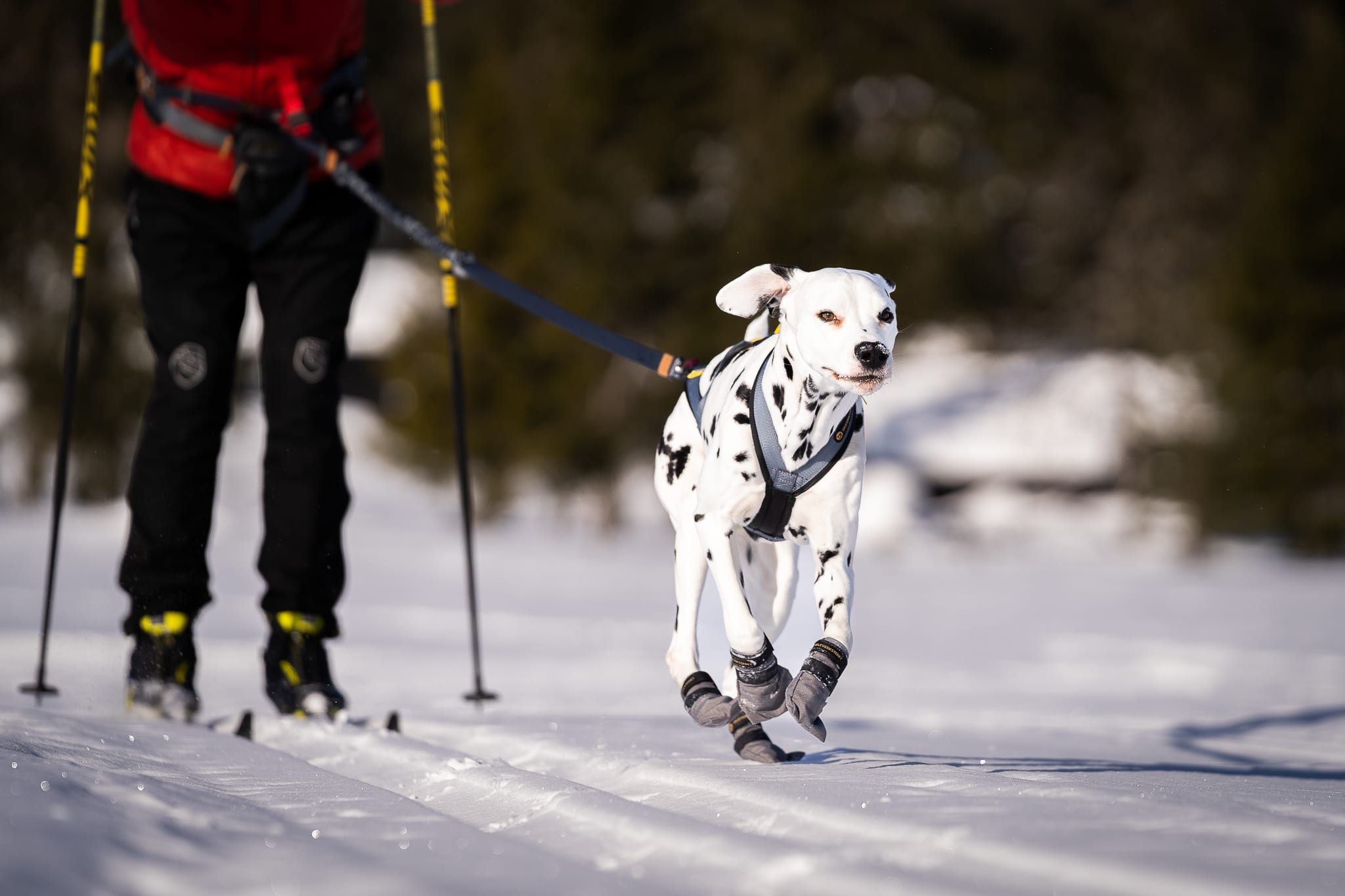
If your dog is not used to long walks at a fast pace, it is important that you adapt the length of the walk to the dog's condition. Start slowly and gradually increase the length and pace of your walks. Vary the speed, length of the walk and type of terrain. Also vary whether you walk in loose snow (strength) or on trails. Remember that for especially small dogs, you will go much faster with skis on your feet than when you walk on foot. It is not a problem to trim at a high speed, but the dog should not have to run as hard as he can the entire walk - if he is not used to this already. So slow down, vary the gait, help if the dog pulls on uphill slopes, brake on downhill slopes to avoid injuries and adapt the length to what your dog is used to before increasing.
How to teach your dog to pull
There are several ways you can teach your dog to pull forward and dare to put a good amount of weight on the harness. Some breeds love to run and pull naturally. While other breeds do not come as naturally to this. Below you will find three different ways to start this training.
Treat bowl with toy or treat
This exercise is great for dogs that are more treat or play motivated than pull motivated. Here's how to do it: Put a pull harness and leash on your dog. Find a treat bowl and show your dog clearly that you are putting a super tasty treat or toy in the bowl. You can chase the dog a little. It is important that this is a treat or toy that the dog really wants. Put the bowl down on the ground so that the dog can see it, take the dog with you and walk a few meters back. Make sure the dog's leash is completely tight (it can be short so you have good control) before you say "yes" or encourage the dog to run towards the bowl. Praise the dog a lot if it is well in the harness and pulls towards the bowl. Run at such a pace that the dog actually has to pull forward to reach the treat bowl or toy. Repeat the process and gradually increase the length of the pulls. The focus should be on eagerness, joy and speed. Praise the dog a lot and make sure that it has a good experience by lying in the harness in this way.
"Hare"
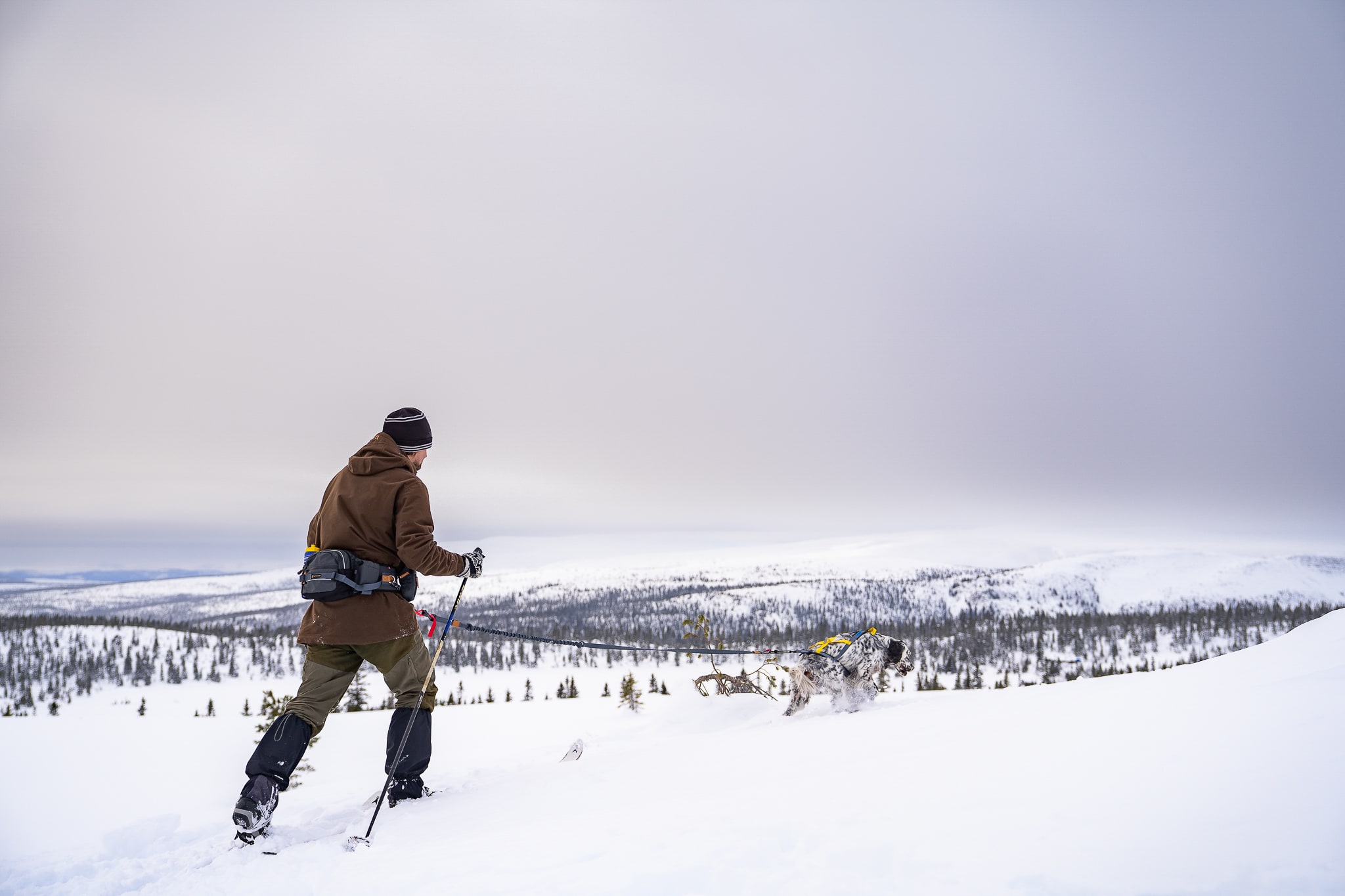
Using such a cold "hare" on a walk with sled dogs is not uncommon. That is, to increase a dog's motivation to pull forward, you have another dog (or a person) cycling or running in front. This allows many dogs to improve their focus forward rather than whining or sniffing around. It all depends on the dog's focus, but first drive short pulls before gradually increasing the length. Praise the dog a lot when it does the right thing.
Workout buddy
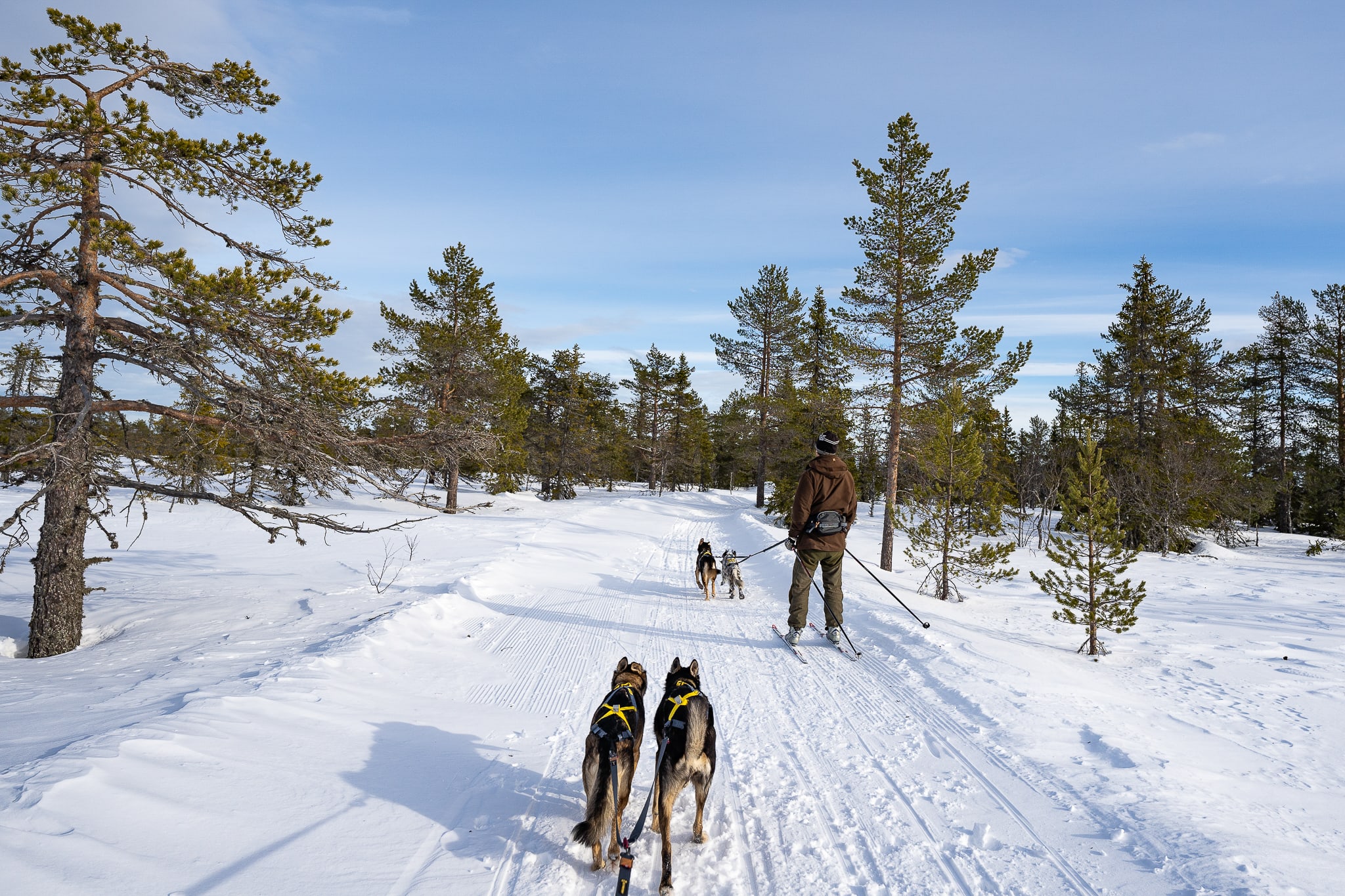
Another good way to increase both motivation and focus is to let your dog walk alongside a trained pulling dog. Use a crow's foot and preferably put an elastic neck leash on them. Put the inexperienced dog on the outer edge of the road, so that the trained dog is closest to any people or other dogs that you may encounter. It is best to start in areas with little disturbance so that only focus and pulling motivation are the main focus. Passing training should only be started when pulling motivation is high and the dog has become good at pulling forward over longer distances.
Skis without traction
Some dogs just don't like to walk in front or pull. But they can still join in on a ski trip! Teach your dog to walk behind or walk on the inside of the tram tracks. Use a custom leash that is long enough for your dog to run on it without pulling, but that doesn't trip over the rope.
Useful skills on the ski slope:
- Teach your dog to walk on the right edge, preferably within the ski track.
- Right/Left
- Passages
- Speed command
And last but not least, it is important that you as a dog owner always:
- Picking up dog poop on the trail
- Be considerate of other skiers
If you have a disobedient dog and are a little unsure of your own skiing skills, it may be a good idea to plan your ski trip to less popular areas and at times when there are as few people as possible on the slopes. This will often avoid angry skiers and prevent you from feeling so in the way.
Before, during and after the ski trip
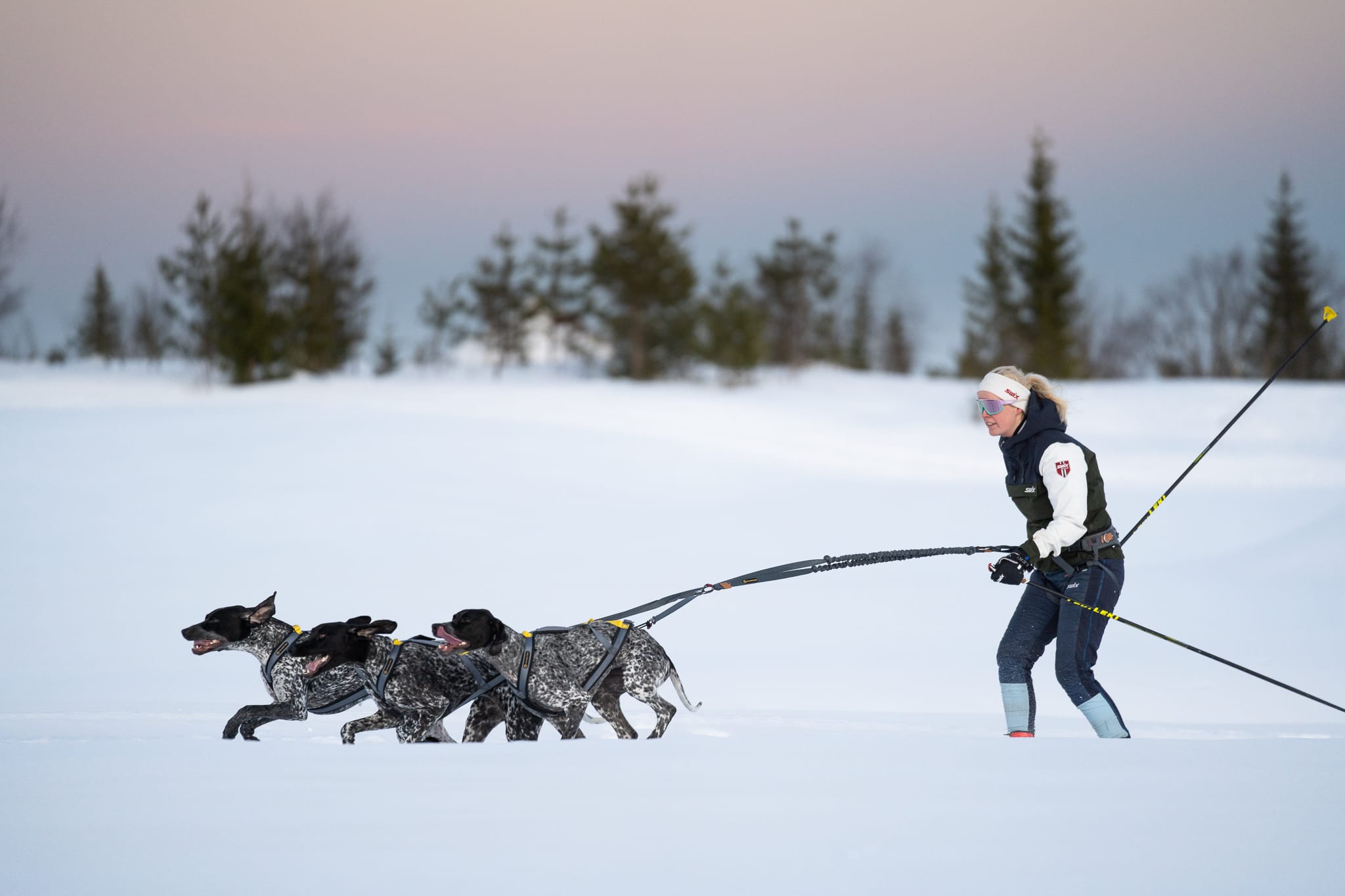
It is a good idea to give your dog a good walk before going skiing. This will prevent your dog from urinating and defecating on the trail. Use this walk to warm up your dog and prepare his muscles for activity. Warming up is a good idea to avoid injuries. This is especially important for dogs that start off at a gallop with great enthusiasm. Consider whether you should wear socks or gaiters.
Always pay attention to whether your dog seems tired or demotivated, alert or full of energy. If your dog starts to get tired, give him breaks and plan for an easier ski trip next time. If you are going on a really long ski trip, you should bring some lukewarm water in a thermos and some energy boosters for your dog.
After the walk, you can stroke your dog's muscles, stretch them out and put a blanket on them. When your dog is warm and comfortable after activity, they will recover faster. Give them energy boosts and water after a long walk when their heart rate has dropped. Check their paws for cracks or sores. Enjoy a tired and happy dog when you get home.
Good luck with your ski trips this winter!


